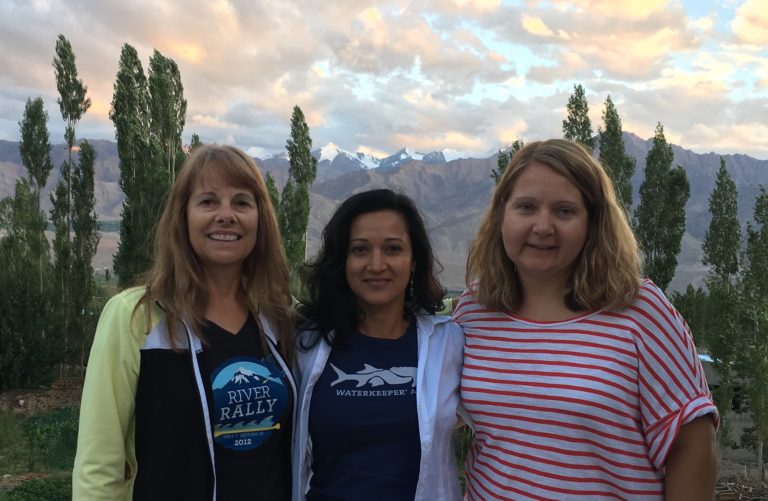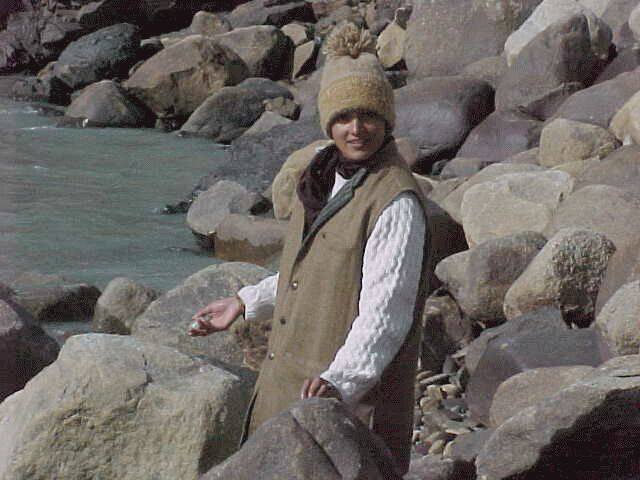
This piece was co-written with Cheryl Nenn, Milwaukee Riverkeeper.
Flying over some of the world’s most spectacular and impossible mountain terrain, Cheryl Nenn, veteran Milwaukee Riverkeeper, and I have arrived in Leh, Ladakh, India, home of Himalayan Glacier Waterkeeper and its 20 Affiliates. As chair of our Waterkeeper Support Committee that vets new Waterkeeper proposals, Cheryl has been a part of the development process that began in 2013 for Himalayan Glacier Waterkeeper and Affiliates. Also joining us is veteran Waterkeeper Christine Ellis from Waccamaw Riverkeeper in North Carolina. Christine and Cheryl are experts in water quality monitoring and have joined me to train these new Waterkeepers and share expertise on how they can be effective clean water advocates.
Padma Tashi, Himalayan Glacier Waterkeeper, picked us up at the airport and drove us to our guesthouse reserved for guests of His Holiness the Gyalwang Drukpa, founder of the growing network of Waterkeepers here. We were so honored to stay at this guesthouse especially as it is the height of a busy tourist season in Leh. Normally the population of Leh is 10,000, but in summer, the population doubles in size to 20,000. This rapid growth in tourism is one of the reasons that this region has begun to suffer from increased development and pollution, particularly from non-biodegradable trash that enters waterways. For the first time ever in this region, a citizen-based water quality monitoring program will be established and conducted by Himalayan Glacier Waterkeeper and its Affiliates.
The Himalayan region is also suffering from increasing impacts from climate change, and Padma has been working with partner organizations focused on mitigation and adaptation measures. Padma has overseen two Guinness World Record tree planting events in his community– in the effort to not only capture more carbon with trees and minimize erosion to streams, but also to protect communities from devastating ‘Himalayan tsunamis’ created by extreme rain events knows as ‘cloudbursts’. Another impact of climate change is shrinking glaciers, which presents another problem for the Himalayan region. Water shortages have gotten so severe in summer months that Padma told us that they now create artificial glaciers – by diverting streams to colder areas so that they freeze in winter—so that the glacial snow melt can better supply communities with water in the summer.

I showed Padma Tashi pictures of when I was here in 1999. The landscape then was green and lush, which is often not the case now in Ladakh. Streams and tributaries have been drying up as glaciers rapidly melt and recede. There are currently 108 streams that support 108 communities. We are fortunate to now have 20 Waterkeeper Affiliates that will be monitoring these streams that feed into the mighty Indus, to ensure that water quality remains safe to sustain their communities, and to help us ensure that this amazing place on earth does not disappear.